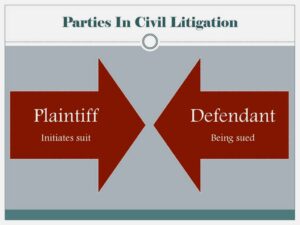
Cox v Swartz 2022 BCSC 1494 reviewed the law relating to re-opening a trial and the prevention of a miscarriage of justice if not allowed.
The court has a broad discretion to permit a party to reopen its case and tender evidence to prevent fundamental miscarriages of justice.
The power is to be used sparingly and with care to prevent frauds and abuses of the courts process that might result: see Clayton v. British American Securities Ltd. (1934), [1934] 3 W.W.R. 257, [1935] 1 D.L.R. 432 at 440 (BCCA) [Clayton]; Graham v. Galaxie Signs Ltd., 2013 BCCA 266 at para. 33 (leave to appeal ref’d: 2014 CanLII 5831 (SCC)) [Galaxie Signs].
The test for reopening of a trial to bring new evidence into the case is whether the applicant has shown on a balance of probabilities that
(1) a miscarriage of justice would probably occur without reopening the trial, and
(2) the new evidence would probably have changed the result of the trial: Grewal v. Grewal, 2016 BCCA 237 [Grewal] at para. 71; Galaxie Signs at para. 33. As noted in Cowichan Valley (Reginal District) v. Jeffries (1983), 46 B.C.L.R. 303, 1983 CanLII 484 (BCSC) [Cowichan Valley] at para. 13, for the purposes of the test, the evidence must indeed be fresh evidence: It must have come to the applicant’s attention after trial, without being reasonably discoverable beforehand.
The farther a trial has proceeded and the more evidence that has been presented, the more stringently the test must be applied and the narrower the scope of the court’s discretion to reopen the trial. Reopening may still occur after judgment has been granted, but greater scrutiny must be applied in such cases: Clayton at 440; Vander Ende v. Vander Ende, 2010 BCSC 597 at para. 84.
The “onus is on the applicant to demonstrate first, that a miscarriage of justice would probably occur unless the matter is reopened, and second, that the new evidence would probably change the result”: AME at para. 9.
Miscarriages of justice do not result from simple unfairness perceived by a party that has failed to adduce evidence. This is a procedural issue usually and should be invoked where “the judicial procedure at issue [has not been] a judicial procedure at all”: see Lin v. Tang, [1997] 9 W.W.R. 679, 1997 CanLII 2675 (BCCA) at paras. 61-64.
It is not necessary for an applicant to show that they have been deliberately misled or deceived in order to reopen a trial. However, it is clear that “‘miscarriage of justice’ means something far beyond the possibility that a different result might have been reached”; a miscarriage of justice is “a result that would leave one party with such an unfair benefit or advantage at the expense of the other that a reasonable person would regard it as shocking and unconscionable”: Aquiline Resources Inc. et al. v. Wilson et al., 2005 BCSC 1461 [Aquiline] at para. 12.
In Moradkhan v. Mofidi, 2013 BCCA 132 [Moradkhan], the applicant lost a summary trial motion and sought to reopen the trial to adduce further evidence, including evidence as to the value of property that was in issue. On those facts, the Court of Appeal said the trial court should not have permitted the parties to adduce vast volumes of evidence, particularly evidence that was available at the time of the original trial.
• it is generally speaking in the interests of justice to consider that a trial is complete when each side has closed their case and the judge has delivered his or her judgment;
• a judge’s unfettered discretion to reopen a trial should be exercised with restraint;
• a party may not use the rule to re-argue, re-cast, or re-state his or her case, rather the rule is available to remedy what might otherwise be a substantial injustice;
• it is not intended that a party should be able to lead substantial new evidence, nor does the rule generally permit the leading of new expert evidence;
• the reasons that the evidence was not led or submissions not made in the first place may be relevant to the exercise of the judge’s discretion, particularly where the failure to do so in the first place was a considered or pragmatic decision; and
• the discretion should only be exercised if the reception of the new evidence would probably change the result of the trial.
Miscarriage of Justice
A miscarriage of justice will not easily be found. The meaning of “miscarriage of justice” was canvassed in Aquiline, where N. Smith J. made the following instructive comments:
Black’s Law Dictionary, 8th ed. (West Group, 2004) defines it as “a grossly unfair outcome in a judicial proceeding”. In Lin v. Tang (1997), 147 D.L.R. (4th) 577, 37 B.C.L.R. (3d) 325 (C.A.) [Lin], Huddart J.A. said:
Miscarriage of justice is a difficult concept. It is not simply unfairness as viewed by the party who perceives himself the victim of an unfair process. (¶61).
Later in her reasons, her ladyship said:
In my view, miscarriage of justice means that which is not justice according to law. A miscarriage of justice will almost always be procedural. The blemish must be such as to make the judicial procedure not a judicial procedure at all. (¶64).
In making the latter statement, Huddart J.A. relied on Robbins v. National Trust Co., [1927] 2 D.L.R. 97 (P.C.), where the term was defined as “such departure from the rules which permeate all judicial procedure as to make that which happened not in the proper use of the word judicial procedure at all”. (¶7).
In the Ontario case of 1307347 Ontario Ltd. V. 1243058 Ontario Ltd., [2001] O.J. No. 257 (Sup. Ct.), Nordheimer J. said at ¶9:
[A] miscarriage of justice involves more than just a finding that a different result might have occurred. It involves a finding that, absent the reopening of the matter and the reversal of the original determination, a fraud would be perpetrated or the giving of perjured evidence or the deliberate misleading of the Court would be countenanced…




